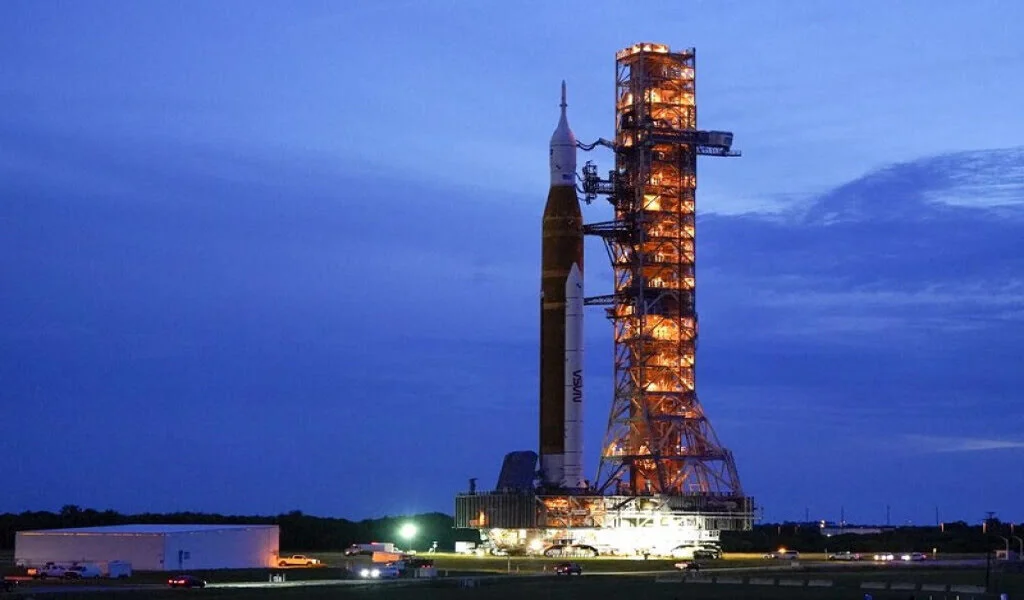Tech
NASA’s Moon Rocket Launch Has Been Delayed Again Due To Tropical Weather

(CTN NEWS) – United States, Miami: Tropical Storm Nicole churned toward the east coast of Florida on Tuesday, causing NASA to reschedule its long-delayed uncrewed mission to the Moon.
According to a tweet by Jim Free, a senior official at the US space agency, a launch attempt scheduled for November 14 will now occur on November 16.
In as many months, the highly-anticipated launch has been delayed three times.
“Our people are the most important aspect of our mission,” wrote Free, NASA’s Associate Administrator for Exploration Systems Development.
“Adjusting our target launch date for #Artemis I prioritizes employee safety and allows our team to tend to the needs of their families and homes.”
Our people are the most important aspect of our mission. Adjusting our target launch date for #Artemis I prioritizes employee safety and allows our team to tend to the needs of their families and homes.
— Jim Free (@JimFree) November 8, 2022
During Wednesday night or early Thursday, the Atlantic Ocean storm is expected to intensify into a hurricane near the Bahamas before landfall in Florida.
The Kennedy Space Center, where NASA’s most powerful rocket will launch, has been issued a hurricane warning.
“NASA has rescheduled the launch of the Artemis I mission for Wednesday, November 16, pending safe conditions for employees to return to work and inspections after the storm passes,” the agency said in a statement Tuesday.
A launch that occurs during a two-hour window that opens at 1:04 am EST (0604 GMT) on November 16 will result in a splashdown on Friday, December 11. November 19 is the backup launch date.
Several days ago, NASA placed the giant SLS rocket on the launch pad. Two launch attempts were scrubbed this summer to protect the rocket from Hurricane Ian due to technical problems.
The 322-foot (98-meter) rocket was rolled back out on a giant platform called the crawler-transporter last week to minimize vibrations.
According to the NHC, Nicole’s sustained winds were near 65 miles per hour (100 kilometres per hour) with stronger gusts earlier Tuesday.
The rocket, estimated to cost several billion dollars, could be damaged by debris from the hurricane if it remains exposed. John Blevins, the chief rocket engineer, said, “We’re looking for peak winds of less than 74.1 knots to stay on the pad.”
NASA says the SLS rocket can withstand winds of 85 mph (74.4 knots) at 60 feet with a structural margin. In addition, the spacecraft hatches have been secured to prevent water intrusion from the launch pad.
Five decades after humans last walked on the surface of the Moon; the uncrewed Artemis 1 mission will bring the United States one step closer to returning astronauts to the Moon.
With Artemis 1, named after Apollo’s twin sister, the SLS rocket and Orion crew capsule will be tested. Mannequins will stand in for astronauts and record acceleration, vibration, and radiation during the mission.
RELATED CTN NEWS:
Anti-Covid-19 Nasal Spray to Be Released in Thailand
Gmail Package Tracking Feature Announced by Google
Apple Watch 8 vs Apple Watch Ultra: Which Should You Choose?






























